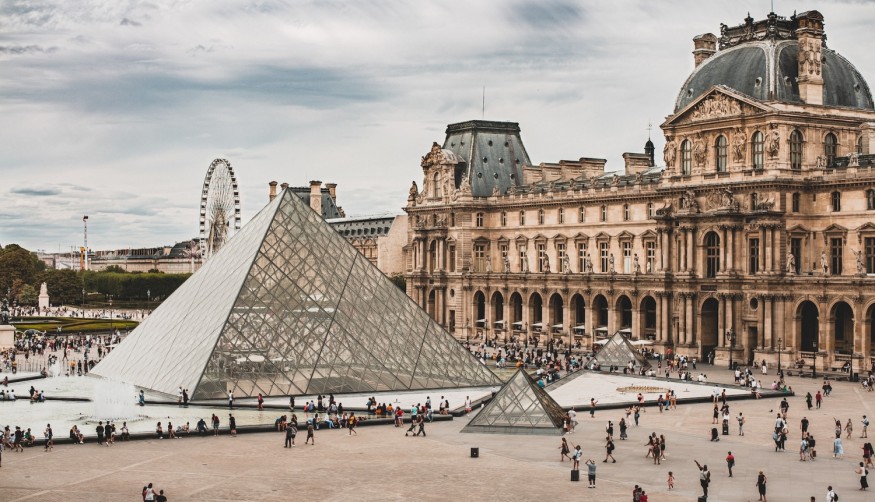
France and Belgium are two of Western Europe's most iconic destinations, known for their rich histories, cultures, and enviable cuisine. From the breathtaking mountain towns of the French Alps to the bustling cities of Brussels and Paris, these neighboring countries pack a diverse blend of attractions within their borders.
Belgium is renowned for its chocolate, waffles, and medieval architecture in places like Bruges. On the other hand, France seduces visitors with its formidable art and fashion, as well as landscapes dotted with vineyards and quaint villages. As you plan your journey through these alluring nations, remember there are several important tips and insights you need beforehand to ensure the trip goes smoothly.
Read on to discover the five important things you need to know when visiting France and Belgium.
5 Essential Things to Know When Travelling Through France and Belgium
Traveling through multiple countries in Western Europe can seem daunting, but with some key insights, you'll feel more confident exploring France and Belgium.
Here are the top things every visitor should know.
1. Transportation Between Cities and Countries
Efficient movement between major cities and across borders is essential for maximizing the time you spend visiting key sites. Luckily, France and Belgium have convenient train and bus networks connecting their major destinations. Travel websites allow you to plan and book multi-leg journeys on a single ticket seamlessly. The more affordable bus journey connects Paris and Brussels in just about four hours, while High-speed trains like the Thalys take about one and a half hours. When traveling to smaller cities in France, bus routes are usually more available.
Download mobile apps from train operators SNCF and SNCB to check schedules and purchase tickets on the go. Advance bookings are typically cheaper, or you can consider a Eurail Pass for unlimited travel within the region. Well-connected hubs like Paris, Brussels, and Lille make it easy to explore surrounding areas by public transit.
2. Typical Weather Patterns and Climate
Knowing what to pack depends on when you visit and where you go. Both France and Belgium have a generally temperate oceanic climate. Summers are mild, with average highs between 70–81°F throughout most areas. Spring and fall see temperatures ranging from 59 to 68°F, while winter days hover around 41 to 50°F with possible snowfall.
The northern regions tend to be cloudier and rainier than the sunny south of France. Be prepared for variable conditions year-round with layering, and don't forget to pack an umbrella or light jacket. Pay attention to weather forecasts, especially if hiking or engaging in other outdoor activities.
3. Major Destinations and Attractions
Beyond iconic landmarks, there are some hidden gems that are great places to go in France besides Paris, awaiting discovery off the beaten path. In Paris, spend at least a full day exploring Notre Dame Cathedral, the Louvre, the Eiffel Tower, and the Champs-Elysées. Top Brussels sights include the Grand Place, Atomium, and Manneken Pis fountain. For natural beauty, visit the Mont-Saint-Michel tidal island, cliff-lined Dover coast, and Belgian Ardennes Forest.
Art lovers can tour the Musée d'Orsay, the Pompidou Centre in Paris, and the Royal Museums of Fine Arts in Brussels. While Lille pays tribute to French Flemish heritage at the impressive Palais des Beaux-Arts, Normandy's famous D-Day beaches and quaint French coastal towns offer glimpses into history.
4. Local Customs and Etiquette
Understanding some of the unwritten rules will help you blend in with residents on every visit. When looking for special dishes to eat in France or a quick bite in Belgium, don't forget that mealtimes in both countries revolve around longer sit-down lunches and dinners compared to the quick American pace. And at museums, dress codes tend to be modest rather than casual. Public displays of affection are similarly acceptable in Europe and the United States, and punctuality is expected for reservations and events.
Tipping 10-15% is customary at restaurants, but it depends on your wish. Have cash on hand, as merchants may not accept foreign cards in rural areas. Learn metro etiquette, like yielding seats for elders and standing on the right. Following the lead of locals will help you experience the culture respectfully.
5. Where to Find Helpful Tourist Information Offices
Stop by an "Office de Tourisme" or "Toerismekantoor" for maps, suggestions, and help in planning your adventures. In larger cities like Paris and Brussels, the central train stations house excellent information areas. Smaller towns operate seasonal visitor centers near landmarks. You can also visit credible websites to research destinations, upcoming events, and activities. Download city guides with self-guided walking tours too.
As there are many languages spoken in Belgium, and France is a hot spot for global tourism, friendly staff at tourist bureaus are often multi-lingual to help make your adventures hassle-free. Drop by to get insider recommendations perfect for your interests and schedule.
Enjoy Travelling Through France and Belgium
Being aware of transportation connections, climate norms, top attractions, common courtesies, and helpful information sources, you'll feel confident exploring the rich cultural offerings and natural beauty of France and Belgium. Focus on experiencing everyday local life at your own relaxed pace between landmark visits. With a little pre-travel knowledge and an open mind, you will discover hidden surprises on every trip and adventure.
This article is copyrighted by Travelers Today, the travel news leader



